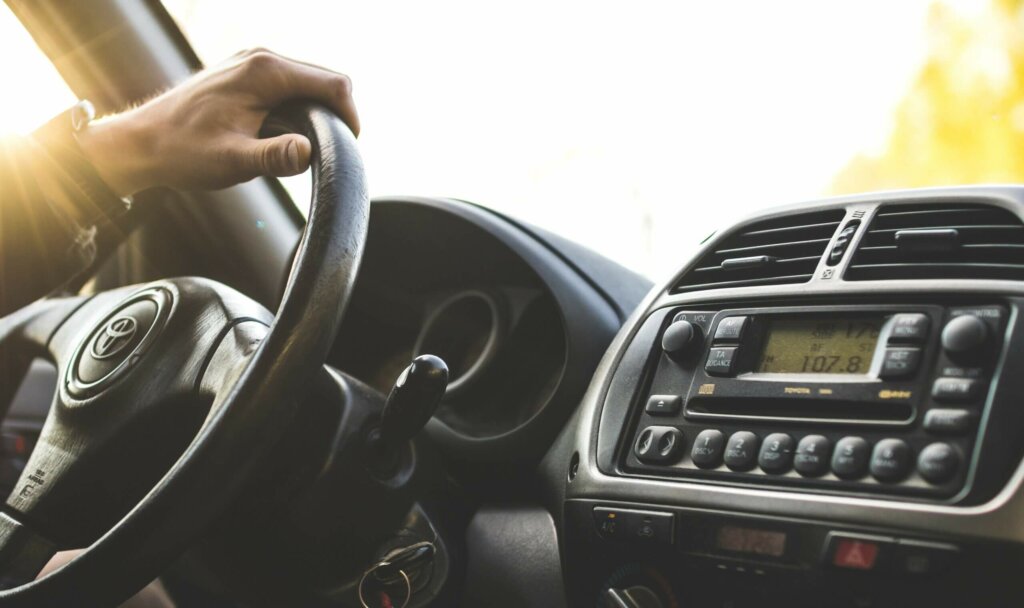The Washington State Patrol provides an extensive list of rules of the road under various categories. Driving rules cover everything from aggressive driving & road rage to alcoholic beverages, auto insurance, construction zones, and distracted driving. At 911DrivingSchool, we provide comprehensive courses that expand on local rules and driving safety. We’re a leading Seattle driving school focusing on making you a better, safer driver.
4 WA Driving Rules You Should Know
Driving rules in Washington State are similar to regulations in other jurisdictions. They focus on the safety of road users. You’ll find rules for all scenarios, including child restraints, emergency zones, emissions, DUIs, HOVs, speed, licenses, vehicle conditions, and more. Washington also has driving requirements unique to the state. Here’s an overview of four general rules every driver should know when driving in WA:
1. Do Not Flee the Scene of a Crash
If you’re part of a car accident in Washington, you should remain at the scene of the crash. Drivers must fulfill specific obligations outlined in the State Legislature. The law requires you to stop and locate or notify the owner of the damaged property. You should also render aid to injured persons wherever possible. Some exceptions exist, so you might have to leave the accident scene. A 911 emergency call may not respond fast enough if you need emergency medical care.
Our Seattle driving school has experienced police officers, firefighters, and EMS driving instructors, but some accidents are unforeseeable. If you’re involved in a crash, the priority is getting medical aid for bodily injuries. Drivers who don’t have an emergency should contact 911 and report the accident. You should also exchange personal information with the other driver/road user. Fleeing the scene of the accident will incur criminal charges and has legal ramifications.
2. Distracted Driving Is Criminal & Prohibited
The State of Washington has legislation against distracted driving and enforces heavy penalties for offenders. Distracted driving is among the preventable causes of car accidents and injuries for thousands of road users annually. The Washington Traffic Safety Commission clearly states that holding a cell phone while driving is illegal. You shouldn’t hold your cell phone when the car is moving, at a red light, or in traffic.
If you must use your phone, get out of the traffic flow or park the car. You can also use your phones hands-free, through Bluetooth, or when contacting emergency services. Drivers in Washington are also prohibited from using tablets, laptops, and games when driving. You shouldn’t watch any videos. Traffic police can also pull you over for other distractions like grooming, eating, and reading while driving. Offenders risk tickets and violations reported to the insurance company.
3. Children Must Be in a Car Seat or Booster Seat
Drivers carrying young children must follow specific child restraint rules. Children below the age of 13 must ride in the back seat whenever practical. Eight-year-old children or younger must be secured in a booster or child seat. Children 4’9” tall or under 40 pounds must also use booster seats. Infants must be secured in appropriate child seats. Here’s a breakdown of the rules for each group of children:
- Below Two Years: Secure the child in a rear-facing restraint system until they outgrow the manufacturer’s height and weight specifications.
- Two to Four Years: Use a car seat with a harness. You can use front or rear-facing seats, depending on the child’s height and weight.
- Four Years or Older: Secure the child in a car or booster seat until they’re taller than 4’9″ or when the shoulder seat belts fit correctly.
- Under 16 Years: Equip the child with a safety belt system. Children below 13 years should also drive in the back seat.
Washington State emphasizes appropriately fitting car seats and booster seats for children to maximize safety. At 911Driving School, we explore more ways to keep your children safe on the roads. Our Seattle driving school covers the general rules, best practices, and technical defensive driving strategies. Using the right seat and seatbelts can reduce the likelihood of injuries in case of a crash. Stick to the recommendations given by the manufacturer or AAP (American Academy of Pediatrics).
4. Headlights Must Be on During Specific Times
The Washington State Department of Licensing requires drivers to turn on their headlights during specific hours. Your headlights must be on within 30 minutes after sunset and stay on until 30 minutes before sunrise. Having the lights on during such time frames gives you maximum visibility and helps to prevent accidents. The law also requires WA drivers to turn on headlights during rainy, cloudy, and misty/foggy conditions.
Drivers should use the high beams when the road has no oncoming vehicles. The high beam setting allows you to see twice as far as you can with regular headlights. You should use the high beams on unfamiliar roads, construction areas, and busy side roads. Dim your head beams as soon as you see an oncoming vehicle within 500 feet. You should also dim the head beams when following another vehicle within 300 feet.
State-Approved Seattle Driving School
Driving rules in Washington are enforced with strict penalties. Breaking the law will result in tickets, fines, and potentially losing your license. At 911DrivingSchool, we offer comprehensive driving school for residents of Washington. We’re a leading Seattle driving school with lessons for teens and adults. Our curriculum also covers defensive driving and learners are taught by leading EMS, first responders, firefighters, and police officers.

